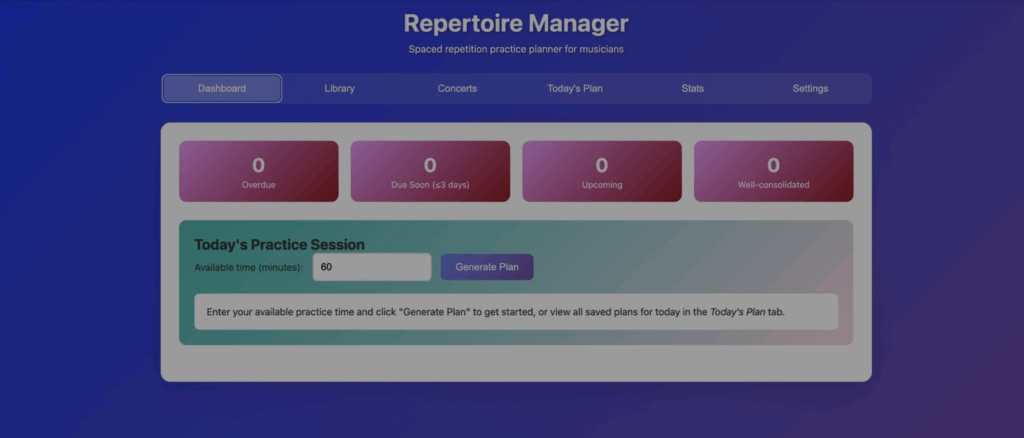
There is a strange familiarity in returning to a piece one has once known intimately. The hands begin to move as if they remember, but the thread unravels quickly. A passage becomes uncertain. A chord voicing, once intuitive, now foreign. The memory is not gone, exactly. It is simply… out of reach.
This is not failure. It is not even loss. It is something quieter, the soft erosion of attention over time. And with it, the subtle guilt of having let go of something that once felt essential.
I began to notice this more sharply some years ago. The invisible effort of maintaining repertoire. The absence of a structure for remembering. Not just practising, but truly revisiting. Not just repeating, but refreshing.
There was no framework for this. No method that accounted for the way memory drifts in and out of reach, not only depending on time, but on the texture of attention, the pressure of performance, the physical state of the body, the day.
Eventually, I developed a tool that has fundamentally changed how I approach practice and memory. It tracks what I have worked on, what is stable, what is fading, and what needs to return. It offers clarity. It structures the chaos that often surrounds a large repertoire, and makes the process of maintenance not only possible, but rewarding.
It is based on some of the latest insights in memory research and cognitive science, including spaced repetition, memory consolidation, and recall dynamics. As far as I can tell, there is nothing quite like it yet for musicians. And although I built it for myself, it has become surprisingly sophisticated.
I have not shared it widely yet, but I am beginning to open it to others who might benefit. It is designed not only for pianists, but for any musician who wants to learn deeply and remember reliably. It supports concert preparation, long-term retention, and the quiet maintenance of a growing repertoire. It can also serve as a source of motivation for amateur musicians who struggle with memory or with finding structure and consistency in their practice.
If this speaks to your needs, feel free to write to me. I would be glad to show you what it looks like.